
Writing:
| Selected Essays |
Sky
Exhibition essay, 2020-21
First of all, let's stipulate the sky begins underfoot. Wherever our planet's rock and water surface ends, is where sky begins. With soles firmly anchored on terra firma, the cranium of a standing human is already in the sky, if not the clouds. We walk around like deep divers on the bottom floor of an airy sea. Standing on Earth and gazing skyward, every day is actually a night bullied out of darkness by the glare of our nearest star, its fresh photons arriving after a mere eight light-minute journey. Entering an envelope of gases, the starlight's shorter waves scatter and turn half the dome blue, obscuring the planet's other half in a shadow that announces the glitter of space-time to anyone looking up. Other than from the screaming bright sun and a few fainter . . .
Read the Entire Essay
☰

Moons
Exhibition essay, 2018
From the nocturnal side of planet Earth, Galileo Galilei peered skyward to darkness and christened a quartet of bright dots he'd been observing for months. It was March 2, 1610, and he would call them the Medicea Sydera (Medician Stars), four specks honoring Grand Duke Cosimo de' Medici of Tuscany, along with Cosimo's three bothers. It wasn't all selfless homage, Galileo was seeking the Duke's patronage -- but it was a big deal in history and the quest for a better understanding of ourselves. While mere points of starlight among so many others, Galileo's weeks of observation had shown these particular dots to be satellites orbiting the massive Jupiter.
Read the Entire Essay

Uncertainty
Exhibition essay, 2016
To the best of our knowledge is never a phrase frozen in time. It's a bit like asking for ten-percent of eternity, but that which cannot be counted also cannot be halved or quartered. A percent of infinity is the same as all of infinity. We can't even say ‘all,’ really, when speaking of something limitless. Likewise, what is knowable keeps expanding, trailed by our best of it, and it summons the realization that there's something else...still...and then even more — even if all we know is all we think there is to know. Fractal-like, what we know drills down to reveal more places to drill down. It's exhausting. Knowledge is the minuend; to our best of it, the subtrahend. Uncertainty is the difference.
Read the Entire Essay
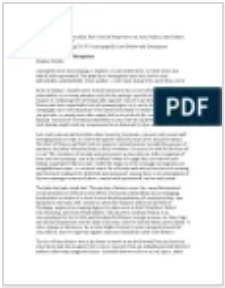
Sci-Art Doubts and Disruptions
Essay for The Brooklyn Rail: Critical Perspectives on Arts, Politics, and Culture; New York, 12/13/2017. Reprinted, PLASMA Magazine, Dresden, 2020.
Among the ideas and meanings it explores, sci-art doubts these: art with intent, and natural with supernatural. Pry apart those assumptions until their halves exist individually, independently of one another — like water and gravity, pried from a river.
In the meantime, consider more clichéd reactions to the sci-art collaboration: the vulnerability to receiving attention only for the pairing's superficial novelty — the surprise at combining two stereotypically opposite ends of a spectrum, the romance of a Romeo and Juliet improbable tryst of epistemologies; or it can be dismissed as a charmingly naive overestimation of the intellectual depth its wonder-and-awe subjects . . .
Read the Entire Essay

Eclipse: A Note to Fulk Bellers
Exhibition essay, 2017
At London's Saint Paul's Cathedral on a 17th-century Sunday, preacher Fulk Bellers scolded his congregation. His admonition was to avoid gullibility over apocalyptic predictions surrounding Black Monday, so named as the next day's solar eclipse of March 29, 1652. They should take pause, he counseled, to identify confusions arising from occult astrology and a lack of Christian faith.
In the noxious brew of magic, supernatural memes, and ancient lore permeating England of the day, Black Monday's dour PR loomed over London, a dark harbinger of bad luck and a lot worse. Bellers delivered a more consolatory brand of caution for his listeners, comparing the eclipse darkness to a loss of grace when life is absent the light of divine . . .
Read the Entire Essay
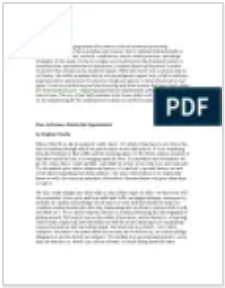
How ArtScience Doubts the Supernatural
Essay, Interalia Magazine; February, 2017
REAL SPACE, so far as we know, really exists. It's what is from here to over there, the airy in-between through which we pass to arrive at our daily places. It's our wandering from the bedroom to find coffee and the morning paper, it's the Metro station commute to the other end of the line, it's swinging open the door. It's anywhere and everywhere we go, fly, swim, dance, crawl and fall — and what we avoid, sit on, step over, and crash into. It's the natural space whose shapes and names, in's and out's, ups and downs, we and every other living thing learn from infancy — the space whose physics we empirically know so well it becomes an extension of ourselves. Humans know real space when they occupy it.
Read the Entire Essay

Energy
Exhibition essay, 2010
The poets haven't always cared much for science. Odd in a way, since they've owned Nature as their subject and loved to rhapsodize about it — that being the very same Nature which is the heart and rationale of science. It must be the way science does Nature, or is perceived to be doing it, that offends the poet's sensitivities — science probing with cool objectivity, stoic dismemberment, and antiseptic analysis. With nothing sacred, it unemotionally, some say arrogantly, has laid to rest cherished but mistaken beliefs from the past. In 1611, just after Galileo's momentous astronomical discoveries, the poet and Anglican priest John Donne referenced a . . .
Read the Entire Essay
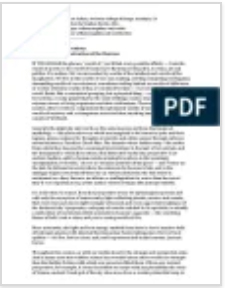
Astronomical Observations Relating to the Construction of the Heavens
Essay for Worlds exhibition, 2011
IF YOU GOOGLE the phrase, "world of," you'll find every possible affinity — from the world of sports, to the world of business, to fly tying or feng shui, to crime, art and politics. It's endless. We're surrounded by worlds of the intellect and worlds of the imagination. We live in the worlds of our own making, swirling competing overlapping demanding worlds of our existence, sometimes trailing behind us worlds of difference or worlds of doubt, worlds of fun, or worlds of trouble — but we only live on one world. Earth. Not a conceptual grouping, but a physical thing — not a metaphor, but a . . .
Read the Entire Essay
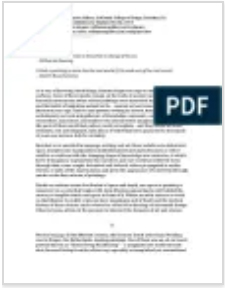
Realspace
Exhibition essay, 2017
As a way of knowing about things, humans began eons ago to make marks on flat surfaces. Some of those marks remain on the walls of ancient caves, left behind by famously anonymous artists whose paintings were instructed by wildlife anatomy and the habits of migrating animal herds — nascent art and science, from seventeen thousand years ago. Curious and pattern -- seeking by nature, those early agents of evolutionary survival and gatherers of knowledge represent a continuum of archaic researchers, innovators, and makers who also invented imaginary explanations for the parts of their world that pattern could not explain — and they mixed all those . . .
Read the Entire Essay
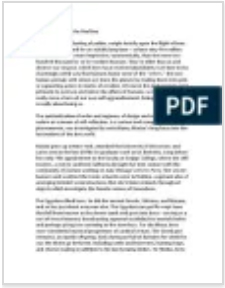
Nancy Macko and the Real Bee
Essay for The Fragile Bee: Nancy Macko at MOAH, 2015
Symbolism, like a dusting of pollen, weighs heavily upon the flight of bees. They've been around for an awfully long time — at least sixty — five million years which seems more impressive, taxonomically, than the mere two — hundred thousand or so for modern humans. They're older than us and deserve our respect, which bees have received abundantly over time in the charmingly weird way that humans honor some of the ‘others,’ the non — human animals with whom we share the planet, by making them into gods or supporting actors in stories of creation. Of course the gods seem to exist primarily to oversee and mirror the affairs of humans, so their invention is really more a form of our own self — aggrandizement. Being about the bees, is really about being us.
Read the Entire Essay
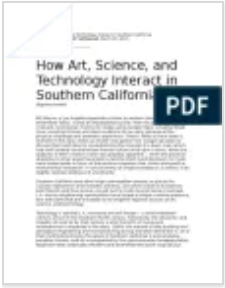
How Art, Science, and Technology Interact in Southern California
Essay, KCET Artbound, 2015
I have a friend, a Los Angeles expatriate vintner in western Oregon's rustic Willamette Valley, who is also an impassioned cyclist. From his pastoral hillside vineyard, he previews his bicycle routes using Google Maps' amazing Street View, scouting inclines and road conditions for an early glimpse at the physical challenge and aesthetic experience. There's likely to have been a moment in the early 2000s as Street View geeks from Google sat down to discuss their bold idea for revolutionizing the concept of a basic map (which had itself already revolutionized human culture once upon a time), when the audacity of their creative vision was palpably apparent — when the practical obstacles to what would have been a fanciful . . .
Read the Entire Essay
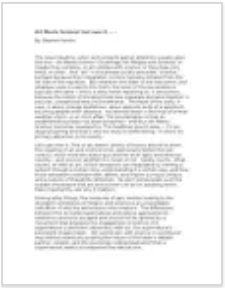
Art Meets Science: Get Over It
Essay for The STEAM Journal, Vol. 1: Iss 1. Claremont Colleges Library; 2013
The news headline, when such projects garner attention, usually goes like this — Art Meets Science! Or perhaps Art Merges with Science! or maybe they combine, or art collides with science, or they fuse, join, bond, or unite. And ‘art’ in the phrase usually precedes ‘science,’ perhaps because their integration is more typically initiated from the art side of the equation. But whatever the order of the two terms, and whatever verb is used to link them, the tenor of the declaration is typically the same — this is a story worth reporting on, it announces, because the notion of bringing these two disparate domains together is peculiar, unexpected and unconventional.
Read the Entire Essay

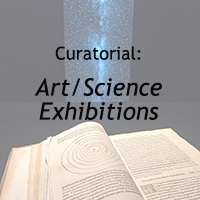
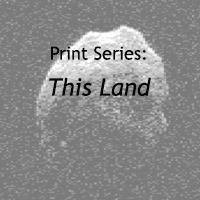
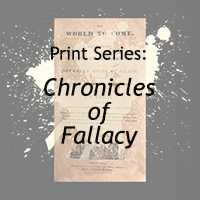
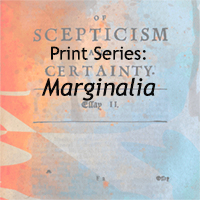

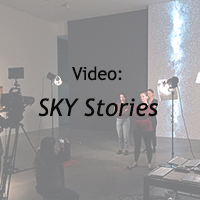
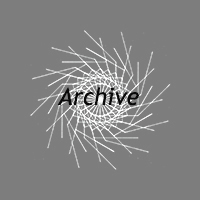
stephen at stephennowlin dot com

